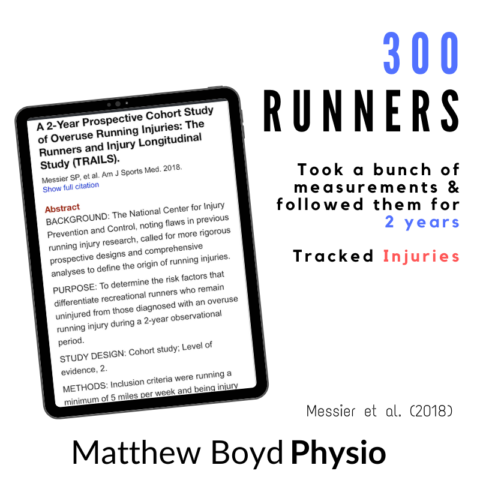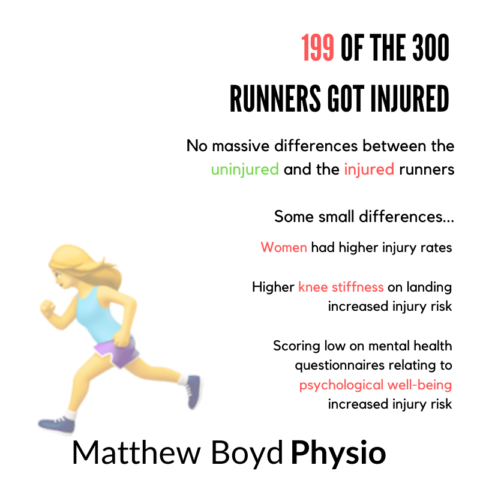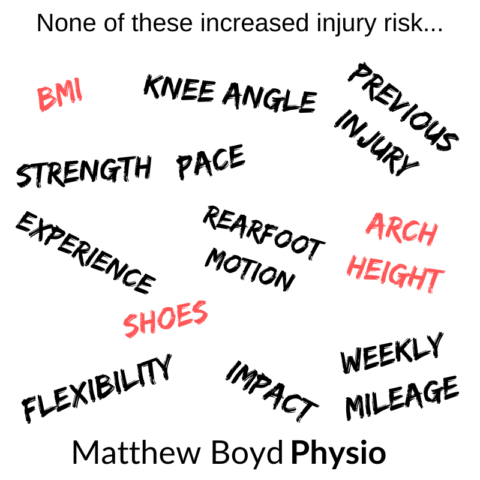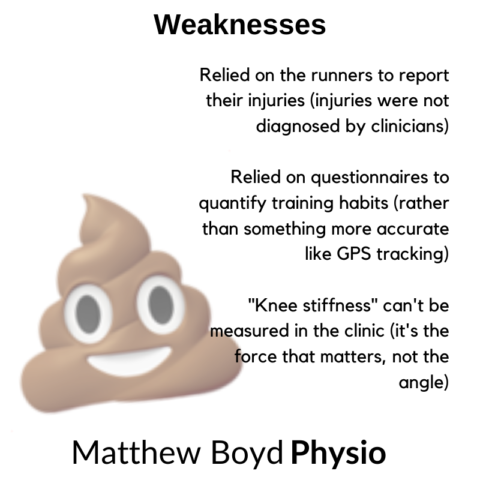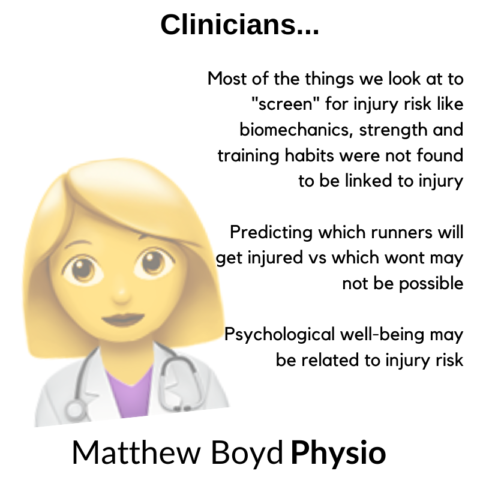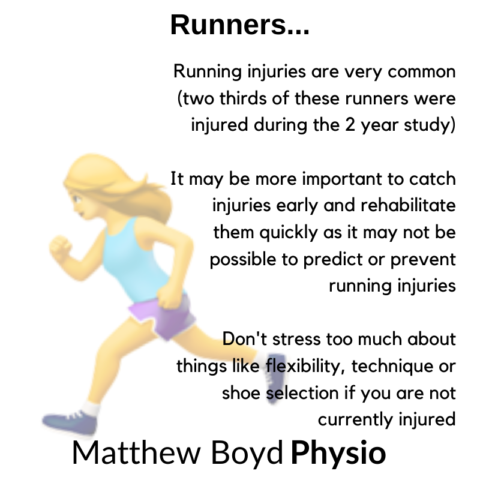Study
- 300 runners
- Took a bunch of measurements
- Followed them for 2 years
- Looked for links between any of the measurements and injuries
Findings
- 199 of the 300 runners got injured
- There was no massive differences between the uninjured and the injured runners except for 3 things…
- Women had higher injury rates
- Knee stiffness on landing increased injury risk (internal force, not the angle – so this can’t be observed on a video)
- Scoring low on mental health questionnaires relating to psychological well-being increased injury risk
- None of the following increased injury risk:
- Flexibility at the ankle or knee
- BMI
- Arch Height
- Q angle
- Rearfoot motion
- Strength
- Weekly mileage
- Running experience
- Running pace
- Shoes
- Previous injury
- Impact
Weaknesses
- Relied on the runners to report their injuries (injuries were not diagnosed by clinicians)
- Relied on questionnaires to quantify training habits (rather than something more accurate like GPS tracking)
- “Knee stiffness” can’t be measured in the clinic (it’s the force that matters, not the angle)
For Clinicians
- Most of the things we look at to “screen” for injury risk like biomechanics, strength and training habits were not found to be linked to injury
- Predicting which runners will get injured vs which wont seems to be impossible
- Psychological well-being may be related to injury risk
For Runners
- Running injuries are super common. Two thirds of these runners were injured during the 2 year study
- It may be more important to catch them early and rehabilitate them quickly as it may not be possible to predict or prevent running injuries
- Don’t stress too much about things like flexibility, technique or shoe selection if you are not currently injured
